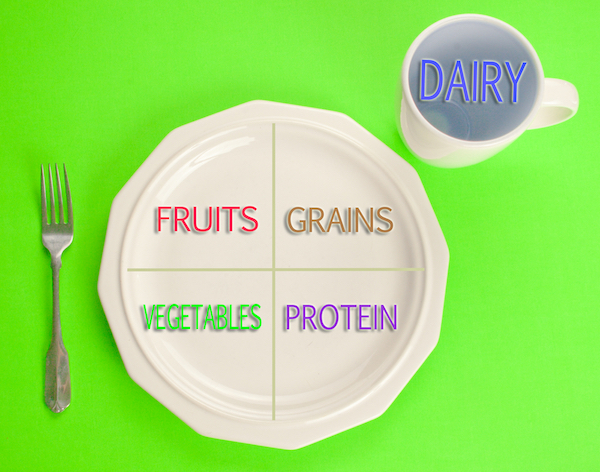When an individual is first diagnosed with diabetes, it is very common to feel as though your dietary restrictions, and the way you plan your meals, is going to overtake your life. However, a diabetes diagnosis doesn’t need to be as daunting as it initially sounds!
Initially, it is common when people hear a diabetes diagnosis that they immediately want to rush to eliminate carbs from their diet – but this isn’t necessarily the correct thing to do. That’s why it’s important to talk with your healthcare provider and perhaps seek the advice of a dietitian to find out what type of meal plan is most appropriate. We need to have some carbs in our diet for our brain to function properly and to help keep your blood sugar under control. The key to maintaining a healthy lifestyle while living with diabetes is to balance the right portions and combinations of foods. With a well-balanced diet, you can eat almost whatever you want—within reason, of course!
The bright side is that since proper nutrition is important for everyone (not only for those who have diabetes) this is not as restrictive of a lifestyle as some first think when diagnosed with diabetes. Healthy eating for people with diabetes is not that different than for everyone else in your life. And as you will see, you do not need to prepare separate meals or buy special foods in order to enjoy meals and outings with friends and family.
Healthy Eating And Living With Diabetes
Generally speaking, a healthy meal plan has a good mix of carbohydrates, protein and fats. With the right balance of healthy eating, combined with regular physical activity and weight management, diabetes can be very successfully controlled.
If you have diabetes, healthy eating can help you to:
● better manage your blood glucose levels
● achieve target blood lipid (fat) levels
● prevent or slow the development of diabetes complications
● maintain a healthy blood pressure
● maintain a healthy body weight
● maintain general good health
Just by simply following a healthy eating plan you can see a marked improvement in the management of your diabetes. For example:
● Including plenty of vegetables and legumes (such as chickpeas, lentils, low-salt baked beans and kidney beans)
● Include some high-fiber carbs such as wholegrain breads, cereals and fruit
● Including some lean protein sources and reduced-fat dairy products
● Reducing your intake of saturated (unhealthy) fat and added sugars, and choose foods low in salt
● Reducing serving sizes of your meals helps to maintain a healthy body weight, which allows for better blood glucose management
Physical Activity And Living With Diabetes
Along with healthy eating, physical activity is so very important. Aim to do at least 30 minutes of moderate intensity physical activity at a minimum of 5 days a week. Just a mere ½ hour of physical activity, 5x a week can help to:
● lower your blood glucose levels
● lower your blood pressure
● lower your cholesterol
● increase muscle and bone strength.
● improve your mood and self-esteem
● reduce stress and anxiety
● improve the quality of your sleep
Making small changes in the amount of time you spend sitting down either at work or at home. Simple changes in your activity level can help reduce the amount of time you spend sitting throughout the day. These can include:
● Take the stairs whenever possible
● Park further away from your destination and walk.
● Get up to get a drink of water on a regular basis, at least once every hour.
● Do chores (vacuuming for example) while watching TV.
● Get up and talk to your work colleagues rather than texting/emailing them.
Basic Eating Guidelines And Living With Diabetes
If you have diabetes, follow a simple healthy eating plan, which includes:
● Eat regular meals throughout the day.
● Make vegetables the main part of your meal (non-starchy vegetables or salad are super healthy AND filling)
● Include a small serving of high-fiber carbs at each meal. Examples such as oats, whole grain pasta, brown rice, quinoa, fruit and starchy vegetables (such as corn, sweet potato and potato).
● Choose reduced-fat or low-fat dairy products. Look for those with the least amount of added sugar.
● Choose lean meats and alternatives, such as skinless chicken and turkey, fish, eggs, beans, tofu and nuts.
● Limit saturated fats that are found in foods such as butter, cream, processed meats, fried foods, and cakes.
● Include some saturated fats like olive, canola or sunflower oil, avocado, seeds and nuts.
● Don’t add extra salt to meals, and reduce the use of foods high in sodium.
● water, tea or coffee (excluding sugar or high-dairy additions)
As you can see, regardless of whether or not you have diabetes (and what type of diabetes you have) these guidelines are a good starting point for healthy eating and maintaining healthier lifestyle habits!
Living with diabetes does not mean you have to give up the things you always did, such as eating in restaurants, and you don’t need to exclude yourself from other activities. As long as you know how to balance your dietary needs with moderate activity, life can go on as usual! Keeping in mind the amount you eat, and the food choices are making, you will see that living with diabetes isn’t all that different than your life was before your diagnosis.
Most of all, just get out there and continue to enjoy life!



